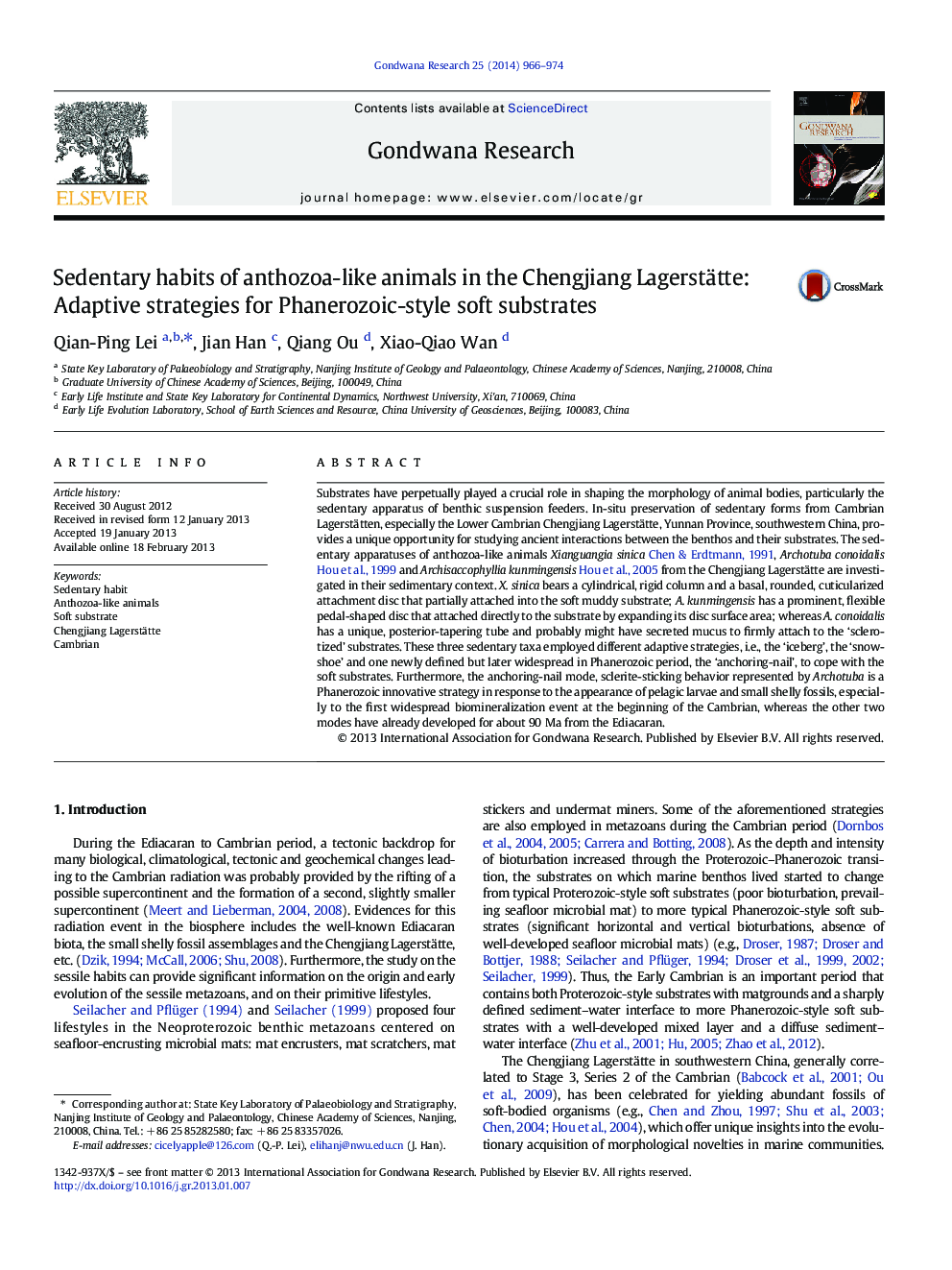| کد مقاله | کد نشریه | سال انتشار | مقاله انگلیسی | نسخه تمام متن |
|---|---|---|---|---|
| 4726966 | 1356355 | 2014 | 9 صفحه PDF | دانلود رایگان |
Substrates have perpetually played a crucial role in shaping the morphology of animal bodies, particularly the sedentary apparatus of benthic suspension feeders. In-situ preservation of sedentary forms from Cambrian Lagerstätten, especially the Lower Cambrian Chengjiang Lagerstätte, Yunnan Province, southwestern China, provides a unique opportunity for studying ancient interactions between the benthos and their substrates. The sedentary apparatuses of anthozoa-like animals Xianguangia sinica Chen & Erdtmann, 1991, Archotuba conoidalis Hou et al., 1999 and Archisaccophyllia kunmingensis Hou et al., 2005 from the Chengjiang Lagerstätte are investigated in their sedimentary context. X. sinica bears a cylindrical, rigid column and a basal, rounded, cuticularized attachment disc that partially attached into the soft muddy substrate; A. kunmingensis has a prominent, flexible pedal-shaped disc that attached directly to the substrate by expanding its disc surface area; whereas A. conoidalis has a unique, posterior-tapering tube and probably might have secreted mucus to firmly attach to the ‘sclerotized’ substrates. These three sedentary taxa employed different adaptive strategies, i.e., the ‘iceberg’, the ‘snowshoe’ and one newly defined but later widespread in Phanerozoic period, the ‘anchoring-nail’, to cope with the soft substrates. Furthermore, the anchoring-nail mode, sclerite-sticking behavior represented by Archotuba is a Phanerozoic innovative strategy in response to the appearance of pelagic larvae and small shelly fossils, especially to the first widespread biomineralization event at the beginning of the Cambrian, whereas the other two modes have already developed for about 90 Ma from the Ediacaran.
Figure optionsDownload as PowerPoint slideHighlights
► Excellent in-situ preservation of sedentary forms in the Cambrian Lagerstätten.
► Sedentary apparatus changes of these animals during Cambrian substrates revolution.
► Propose four adaptive strategies in response to Phanerozoic-style soft substrates.
► Anchoring-nail mode is a Phanerozoic innovation.
Journal: Gondwana Research - Volume 25, Issue 3, April 2014, Pages 966–974
